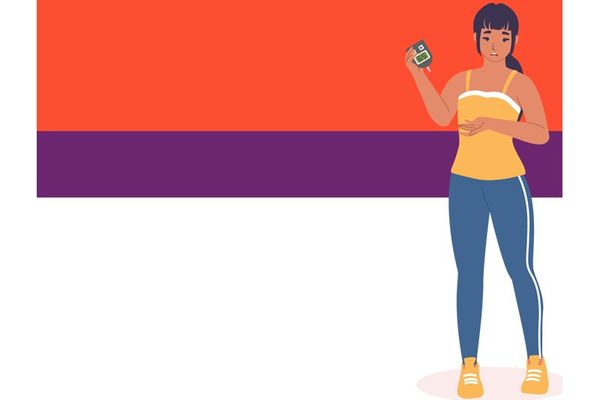- When traveling by car
Schedule a pre-travel checkup with your health care professional about four to six weeks before your trip, for any kind of travel. Check your glucose just before leaving, and don't leave before dealing with it and rechecking if it is below normal. Bring snacks and drinks with you, and if you're on a long trip, a meal just in case. Put insulin under the seat in a cooler or thermal bag, but not in the trunk, on the dashboard or on ice. Plan stops for checking glucose and stretching, and pull over at the first signs of hypoglycemia.
- When traveling by air
Call your airline to find out how to bring syringes and lancets through security checkpoints. Keep the outside boxes of your insulin and/or glucagon, so the prescription labels can be shown to security, bring a medical letter documenting your diabetes, and speak to the security guard in advance. Carry snacks in case your meal doesn't arrive soon enough. Don't pack insulin in your checked luggage; it will be damaged by extreme temperatures in the cargo hold. Keep your diabetes supplies nearby, not in the overhead compartment, so they're accessible at all times. Drink bottled water to stay hydrated. - When dining out
Dining out can be an enjoyable experience for people with diabetes with a little advance planning. Concentrate on the three Ps: planning, portions and preparation. Many restaurants publish their menus online. Take a look at the menu and decide before you go what you are going to have. This can help avoid overeating and assist you in figuring out the carbohydrate and fat content of the meal in advance if you are dosing insulin to your food intake. As for portions, splitting a meal with a friend or having the server wrap half of the meal before it comes to the table can help you stick to your meal plan while taking care of tomorrow's lunch. Finally, remember that you are in charge. If the menu doesn't explain how a dish is prepared, ask. Most restaurants are happy to substitute something else that is already on the menu, such as another vegetable in place of rice. - Cut down the costs of diabetes
Check your health insurance to know exactly what it covers. Be sure to comparison-shop when buying supplies. Blood glucose meters may be available for free if you buy 100 test strips, but pay attention to quality and meter features. Buy only the amount of test strips you can use before they expire. Don't split your test strips or reuse lancets. You can reuse syringes, although after about five uses the needle begins to get dull. Instead of alcohol wipes, use soap and water to clean your hands or the skin at the injection site. - More cost-cutting tips for managing diabetes
Instead of expensive, packaged "dietetic" foods, shop for healthy basic foods. Begin collecting free make-ahead or no-time healthy recipes from diabetes associations and other sources. Clip coupons and look for weekly specials. If you're given a brand prescription, ask if a generic would work and if free samples are available. Ask your pharmacy about discounts and rebates. Check out free offers from diabetes associations and manufacturers of diabetes drugs or equipment. Know the insurance laws in your state or learn more about Medicare coverage. If necessary, find out if you qualify for state or drug manufacturer patient assistance programs. - If you are sick
Your blood sugar will often be higher than usual when you are sick so continue to take your usual medication, including injections. The only exception is if your health care professional advises you to change it. Check blood glucose every three to four hours around the clock. Write these results down so you can communicate them over the phone if necessary. It is important to keep hydrated. Drink fluids that are sugar-free, but if you can't eat, alternate them with fluids containing sugar, such as juice or regular soda. Rest and call your health care professional if you are vomiting or have diarrhea, excessively high blood sugars or ketones or if you have any questions or concerns. Putting together a sick day kit ahead of time can help prepare you for emergencies. - Organizers you can use
Diabetes management software allows you to analyze trends in your blood glucose levels, and some programs allow direct downloads from your meter. One such program is Diabetes Pilot, which can be used with desktop computers, Palm handhelds, and pocket PC handhelds. Many meters come with their own software for downloading. You may also try commercial or free programs, but check their compatibility with your meter and (for Web-based software) privacy policies. The MEDport Organizers are zippered soft cases in different sizes that carry your supplies and have a cool side for insulin. The Day-to-Day Diabetes Calendar provides helpful information and inspiring words about diabetes management. A vibrating alarm watch, available from many manufacturers, can serve as a nondisruptive reminder system. - Caring for your feet
Wash your feet with soap and warm water (not hot) every day, and pat dry carefully, including between the toes. Use lotion, especially over your heels. Check your feet daily. Use a mirror if necessary to see the soles of your feet. Ask your health care professional how to treat corns, calluses, bunions or cracks in the skin of your heel. Call your health care professional if you see swelling or redness or feel numbness or tingling in either foot. Don't go barefoot. Wear well-fitting shoes and seamless socks, and don't let your feet get too hot or cold.
From Your Site Articles
Related Articles Around the Web







